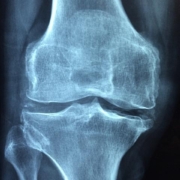5 Essential Tips to Manage MSK Pain While Working
5 Essential Tips to Manage MSK Pain While Working
In today’s fast-paced world, many of us find ourselves tethered to our desks for hours on end, often at the expense of our musculoskeletal (MSK) health.Whether you’re navigating the challenges of remote work or enduring long hours in a customary office, managing MSK pain is crucial for maintaining productivity and overall well-being.In this listicle, we present five essential tips designed to help you alleviate discomfort and enhance your work experience. From ergonomic adjustments to mindful movement techniques,you’ll discover practical strategies that can seamlessly integrate into your daily routine. Say goodbye to nagging aches and hello to a more comfortable work environment as you learn how to take control of your MSK health.
1) Prioritize Ergonomics: Invest in an ergonomic chair and desk setup to support your spine and reduce strain on your muscles and joints. Adjust your workspace to ensure your monitor is at eye level and your feet are flat on the ground, promoting a healthier posture throughout your workday
creating a workspace that prioritizes your comfort is essential for anyone looking to alleviate musculoskeletal (MSK) pain. Investing in an ergonomic chair can make a meaningful difference in how your body feels at the end of the day. Look for chairs that offer adjustable height, lumbar support, and armrests to accommodate your unique body shape. Pairing this with a height-adjustable desk can further enhance your comfort, allowing you to alternate between sitting and standing, which can help reduce stiffness and fatigue. Remember, your monitor should be positioned at eye level to prevent neck strain, and your feet should rest flat on the ground or on a footrest for optimal support.
To ensure your workspace is tailored to your needs,consider the following adjustments:
- Monitor Position: Place the top of your screen at or just below eye level.
- Chair Height: Adjust your chair so your knees are at a 90-degree angle, with your feet flat.
- Keyboard and Mouse: keep them within easy reach to avoid overreaching, and ensure your wrists are straight.
By taking these steps, you can foster a healthier posture that not only enhances your productivity but also minimizes the risk of developing chronic pain associated with poor ergonomics.
2) Take Regular Breaks: Schedule short, frequent breaks to stand up, stretch, and move around. This helps prevent stiffness and allows your muscles to relax, reducing the risk of exacerbating musculoskeletal pain. Aim for a 5-minute break every hour to recharge both your body and mind
Incorporating regular breaks into your work routine can be a game-changer for managing musculoskeletal (MSK) pain. By stepping away from your desk every hour, you give your body the possibility to reset. Use these breaks to stand up,stretch,and engage in light movement. this simple practice not only alleviates stiffness but also enhances your overall productivity. Consider setting a timer or using a reminder app to ensure you don’t skip these essential pauses in your day.
During your breaks, try incorporating a few quick stretches or exercises that target common areas of discomfort. Here are some effective activities to consider:
- Neck Rolls: Gently roll your head in a circular motion to relieve tension.
- Shoulder Shrugs: Raise your shoulders towards your ears and then release them down.
- Wrist Flexes: Extend your arms and flex your wrists to counteract typing strain.
- Hamstring Stretches: Stand up and reach for your toes to stretch your lower back and legs.
By prioritizing these brief moments of movement, you’ll create a more dynamic work environment that encourages physical well-being. Remember, a few minutes spent on self-care can significantly reduce the risk of chronic pain and enhance your focus for the tasks ahead.
3) Incorporate Stretching: Integrate simple stretches into your daily routine to alleviate tension and improve flexibility. Focus on areas that commonly experience discomfort, such as your neck, shoulders, and lower back. A few minutes of gentle stretching can make a significant difference in managing pain
Incorporating stretching into your daily routine is a simple yet effective way to combat musculoskeletal pain. By dedicating just a few minutes each day, you can alleviate tension and enhance your flexibility. Focus on key areas that are prone to discomfort, such as your neck, shoulders, and lower back. Here are some easy stretches you can integrate into your workday:
- Neck Rolls: Gently roll your head in a circular motion to release tension.
- shoulder Shrugs: Lift your shoulders towards your ears, hold for a moment, then release.
- Seated Torso Twist: While sitting, twist your upper body gently to one side, then the other.
- Cat-Cow Stretch: On all fours, alternate between arching your back and sinking it down to stretch your spine.
To track your progress and ensure you are incorporating these stretches consistently, consider creating a simple stretching schedule. This can help you maintain a routine and remind you to take breaks during your workday. Below is a sample table to guide you:
| Time | Stretch | duration |
|---|---|---|
| 10:00 AM | Neck Rolls | 1 minute |
| 12:00 PM | Shoulder Shrugs | 1 minute |
| 2:00 PM | Seated Torso Twist | 1 minute |
| 4:00 PM | Cat-Cow Stretch | 1 minute |
By incorporating these stretches into your workday, you can create a more comfortable and productive environment. Remember, a few minutes of gentle stretching can lead to a significant reduction in pain and discomfort, allowing you to focus better on your tasks.
4) Stay Hydrated: Drinking enough water is crucial for maintaining muscle function and overall health. Dehydration can contribute to muscle cramps and discomfort, so keep a water bottle at your desk as a reminder to stay hydrated throughout the day
Staying properly hydrated is more than just quenching your thirst; it plays a vital role in your muscle function and overall health. When you’re immersed in work, it’s easy to overlook your water intake, but dehydration can lead to muscle cramps and discomfort that disrupt your focus. To keep your body functioning optimally, consider placing a water bottle on your desk as a constant reminder to sip throughout the day. Aim for at least 8 cups of water daily, and adjust based on your activity level and individual needs.
To make hydration more appealing, you can infuse your water with fruits, herbs, or even a splash of citrus. This not only enhances the flavor but also encourages you to drink more. Here’s a quick reference table to inspire your hydration routine:
| Infusion Ideas | Benefits |
|---|---|
| Lemon & mint | Refreshing and aids digestion |
| Strawberry & Basil | Rich in antioxidants,boosts mood |
| Cucumber & lime | Hydrating and revitalizing |
| Orange & Rosemary | Immune-boosting and aromatic |
By keeping hydration at the forefront of your daily routine,you can mitigate the risk of discomfort and enhance your productivity. Remember, every sip counts towards a healthier, more comfortable workday!
5) Listen to Your Body: Pay attention to the signals your body sends you.If you start to feel pain or discomfort, take a moment to reassess your posture or activity level. Acknowledging these cues can definitely help you make necessary adjustments and prevent further injury
our bodies are amazing communicators, frequently enough sending us subtle signals about our physical state. When working, it’s essential to tune into these messages, especially if you’re prone to musculoskeletal (MSK) pain. Feeling a twinge in your back? Noticing tension in your shoulders? These sensations are your body’s way of indicating that something might be off. Taking a moment to pause and evaluate your posture or adjust your activity level can make a world of difference. By acknowledging these cues early on, you empower yourself to make necessary changes that can prevent further discomfort or injury.
To enhance your awareness, consider keeping a simple pain diary where you can jot down any discomfort you experience throughout the day. This can help you identify patterns and triggers,making it easier to implement preventive measures. You can also incorporate the following strategies into your routine:
- Stretch regularly: Incorporate short breaks to stretch and move your body.
- Maintain good posture: ensure your workspace is ergonomically designed to support your body.
- Hydrate: Drink plenty of water to keep your muscles and joints lubricated.
In Summary
As we wrap up our exploration of essential tips to manage musculoskeletal (MSK) pain while working, remember that taking proactive steps can significantly enhance your comfort and productivity. By incorporating these strategies into your daily routine, you not only empower yourself to tackle the challenges of work-related discomfort but also cultivate a healthier, more balanced lifestyle. Whether it’s adjusting your workspace, practicing mindful movements, or prioritizing breaks, each small change can lead to a significant impact on your well-being. So, take these tips to heart, listen to your body, and create an environment where you can thrive—both professionally and personally. Here’s to working smarter, feeling better, and embracing each day with renewed energy!










Leave a Reply
Want to join the discussion?Feel free to contribute!